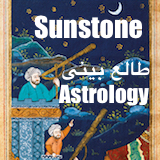Jojo Anavim in his loft, with, left, Dana Nehdaran’s “Three Materials at the Same Time” (2018), and, right, Allison Zuckerman’s “To Turn a Phrase” (2019). Credit...Joel Barhamand for The New York Times
By Shivani Vora
The New York Times: Jojo Anavim may be a contemporary pop artist himself, but he says that his personal art collection is informed mostly by his Persian-Jewish roots. His parents, Immanouel and Ladan Anavim, both fled Iran before the country’s 1979 revolution — a time when Jews were among those facing persecution — and settled on Long Island.
Mr. Anavim, 34, grew up there amid a tight-knit Persian community, and the art on the walls of the loft where he lives and works in Chelsea are reflections of the cultures that imbued his childhood.
“A lot of my works are by Persian or Jewish artists that are living and working today, and if they’re not, they remind me of my ethnicity in some way,” he said.
Over the last several years, Mr. Anavim has acquired pieces by the Iranian contemporary artists Dana Nehdaran, Maryam Khosrovani and Zahra Nazari, all of whom live in New York; the Jewish painter Allison Zuckerman, from Brooklyn; and the Los Angeles graffiti artist RETNA.
These are edited excerpts from our conversation.
When and why did you start collecting Persian and Jewish art?
I got interested in my late 20s. Iranian culture has so many different facets, from the food to the music, and it’s something I’ve always been proud of. I also find it very visually appealing in terms of its colors and intricacy, so it was natural for me to want art by artists who share my background.
A piece from Mr. Nehdaran’s Persian Tile series (2017) that Mr. Anavim said brings to mind his Iranian grandparents’ pottery collection.
A piece from Mr. Nehdaran’s Persian Tile series (2017) that Mr. Anavim said brings to mind his Iranian grandparents’ pottery collection.Credit...Joel Barhamand for The New York Times
Do you remember the first piece of art you acquired?
I’ll never forget it, and it’s the piece I hold closest to my heart. My first art teacher, Al Baruch [an animator at Disney and elsewhere], gifted me a cartoon sketch of Captain Hook. He actually helped to create several animated characters including Mighty Mouse. I tried to track Al down for years. Then, I mentioned him in a story that profiled me. His daughter read it and reached out. We’re now good friends.
Many of your works are by Dana Nehdaran. What do like about his art?
We got introduced through a mutual Persian friend, and his art feels like home to me. I love the ornate patterns, the metallic elements and tile fragments. They represent the rugs, furniture and architecture of my family and friends growing up.
If you look at the patterns on the big square white one, they’re similar to those on a Persian rug.
The blue/green work is part of his Persian tile series and has actual fragments of tile, along with iron powder, oil paint and copper leaf. It reminds me of my grandparents’ vase and pottery collection from Iran.
And the round piece is a map with Iran centered and ominously painted in bronze. To me, it has a dual meaning of Iran being isolated politically but also celebrates the societal connections between Iran and the world.
Do you have any works that depict anything in Iran?
The painting in my bedroom by Zahra Nazari. It’s an abstract take on the Thirty-Three Bridge, a 17th-century bridge in Isfahan, Iran. My grandfather is from Isfahan, and I vividly remember looking at pictures of the actual bridge in an Iranian history book. I’m drawn to its abstract nature, and the burst of brush strokes are very powerful.
The two large colorful works — one in your kitchen area and one in your living room — look like they’re by the same artist.
They’re both by Allison Zuckerman. She reclaims elements of everything from Renaissance to modern paintings and gives them a narrative that is uniquely her own. In these pieces, she references artists including Matisse and Picasso and reimagines them, using layers of pixels and paint, to be bold and empowered female figures.
What’s the story behind the series of four miniature white images near your dining table?
Maryam Khosrovani did these. They’re made of plaster and reference New York’s urban landscape, including fire escapes and laundry drying on lines. I like how they’re clean, minimal and monochromatic. To me, they represent simplicity and modesty.
Can you share an example of an artwork that evokes your culture but isn’t by a Persian or Jewish artist?
The blue piece by RETNA. The Farsi alphabet is naturally calligraphic in nature, and when I look at the geometrical forms and lines he employs, I see a Middle Eastern influence. My grandparents always had Persian newspapers and magazines, so Farsi typography is very nostalgic to me.










Comments